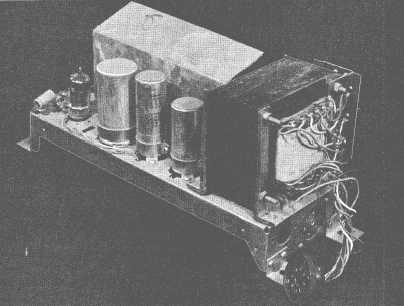1-3
VACUUM-TUBE EQUIPMENT
Vacuum tubes were found to have several built-in problems. Although the tubes were lightweight,
associated components and chassis were quite heavy. It was not uncommon for such chassis to weigh 40
to 50 pounds. In addition, the tubes generated a lot of heat, required a warm-up time from 1 to 2 minutes,
and required hefty power supply voltages of 300 volts dc and more.
No two tubes of the same type were exactly alike in output characteristics. Therefore, designers were
required to produce circuits that could work with any tube of a particular type. This meant that additional
components were often required to tune the circuit to the output characteristics required for the tube used.
Figure 1-1 shows a typical vacuum-tube chassis. The actual size of the transformer is approximately
4
4
3 inches. Capacitors are approximately 1
3 inches. The components in the figure are very large
when compared to modern microelectronics.
Figure 1-1.—Typical vacuum tube circuit.
A circuit could be designed either as a complete system or as a functional part of a larger system. In
complex systems, such as radar, many separate circuits were needed to accomplish the desired tasks.
Multiple-function tubes, such as dual diodes, dual triodes, tetrodes, and others helped considerably to
reduce the size of circuits. However, weight, heat, and power consumption continued to be problems that
plagued designers.
Another major problem with vacuum-tube circuits was the method of wiring components referred to
as POINT-TO-POINT WIRING. Figure 1-2 is an excellent example of point-to-point wiring. Not only
did this wiring look like a rat's nest, but it often caused unwanted interactions between components. For
example, it was not at all unusual to have inductive or capacitive effects between wires. Also, point-to-
point wiring posed a safety hazard when troubleshooting was performed on energized circuits because of
exposed wiring and test points. Point-to-point wiring was usually repaired with general purpose test
equipment and common hand tools.

